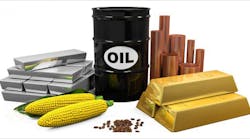It’s a global world so the prices of common things like tires, oil and maintenance parts can vary depending on not only what is happening in the U.S. economy but also in other markets around the world.
For example, China is a striving global leader in just about everything, according to Rob Garcia, Corcentric senior vice president of supply management. The situation with tariffs between the U.S. and China are complicating the trade picture. BRIC nations are highly dependent on commodities trades, which are trending higher and should help improve BRIC economies. Crude oil index trading is up $20 from the last quarter of 2018 but the industry is relatively stable at the moment. Prices for natural rubber are projected to grow as production decreases resulted in price increases of 19.4% in the last four months.
Garcia took a deeper dive into several product categories that are important to the trucking industry.
- Tires: The cost of tire-related commodities is rising and there seems to be a developing issue with availability. The main drivers of the price increase are the oil-based materials like synthetic rubber, carbon black and many chemicals. Most tire manufacturers have raised prices 3% to 6% and have adopted an in-country production strategy expanding domestic capacity. There are hints of product limitations.
- Lubricants: Significant price pressure has been thwarted by producers with temporary plant shutdowns and production reductions. Base oil prices are rising but thus far lubricant manufacturers have not implemented price increases. The U.S. market seems to be stable, but the Canadian market is a mixed bag. In addition, lubricant manufacturers continue to pursue synthetic oil adoption to add stability in raw materials and production.
- Maintenance: Parts, service and maintenance services will experiencing 5% to 10% growth by 2020. There is a question mark when it comes to whether there will be parts shortages in the aftermarket.
It is important to keep an eye on movement in the commodities market in order to be aware of developing trends in pricing and availability.



